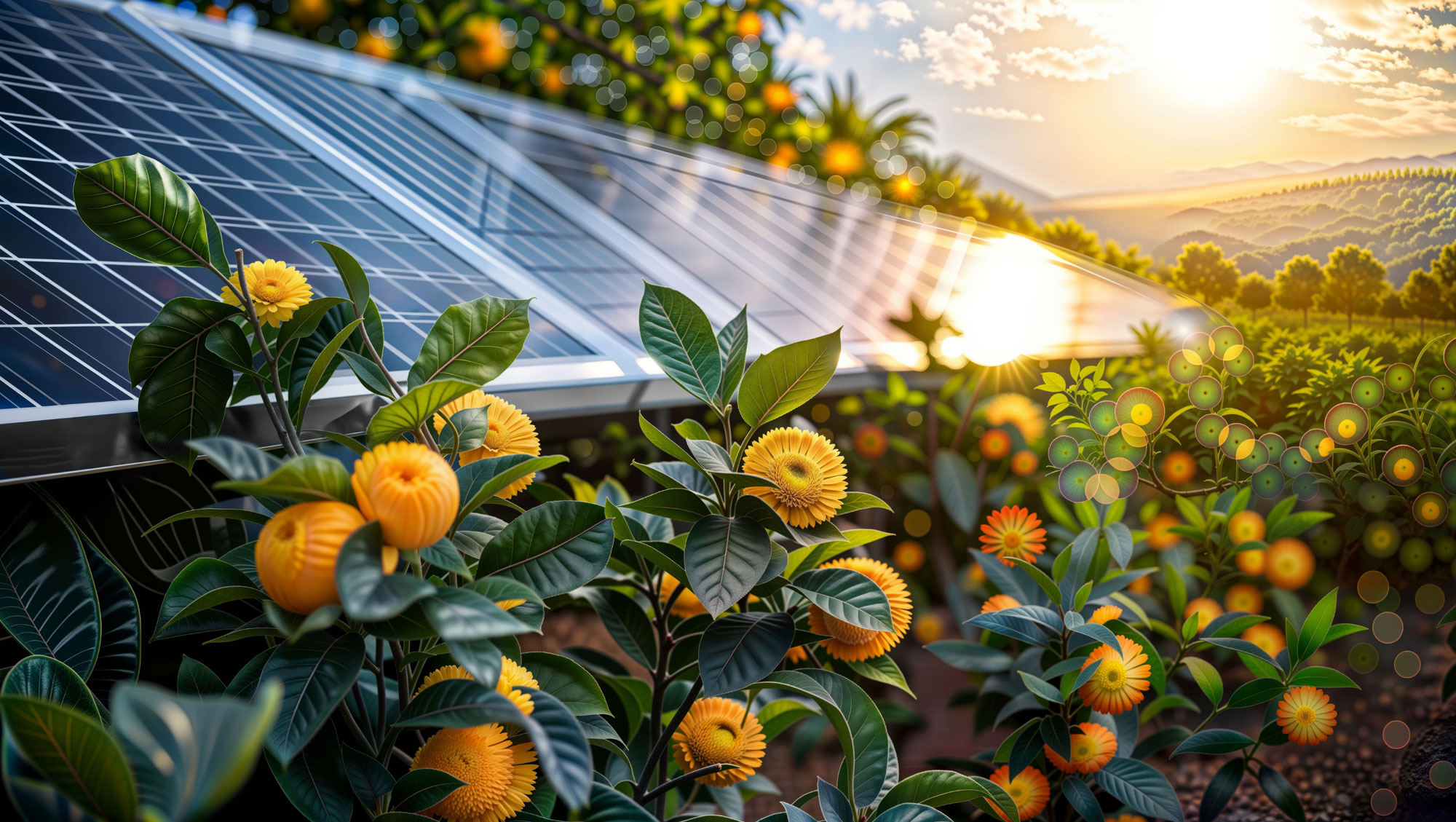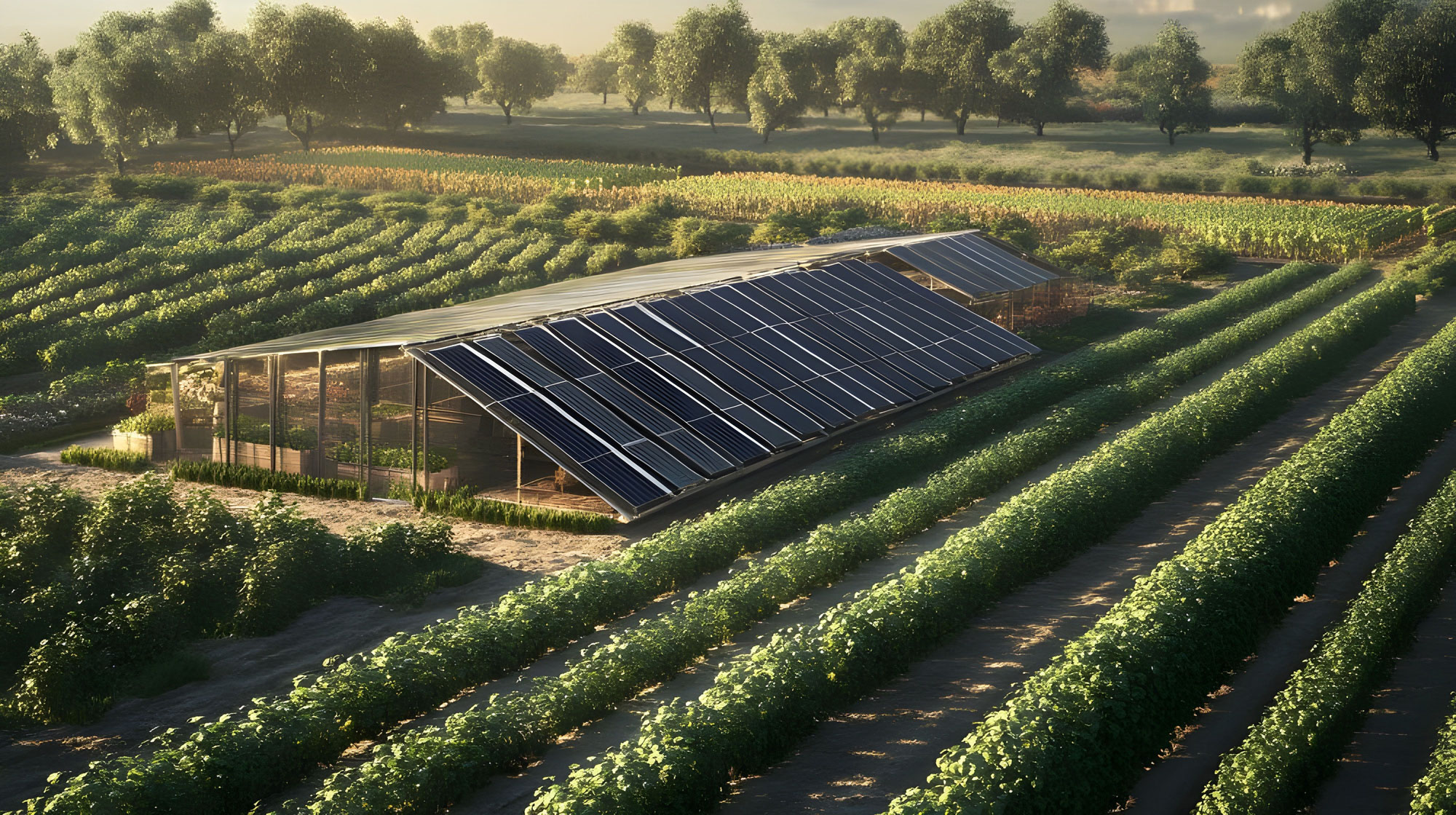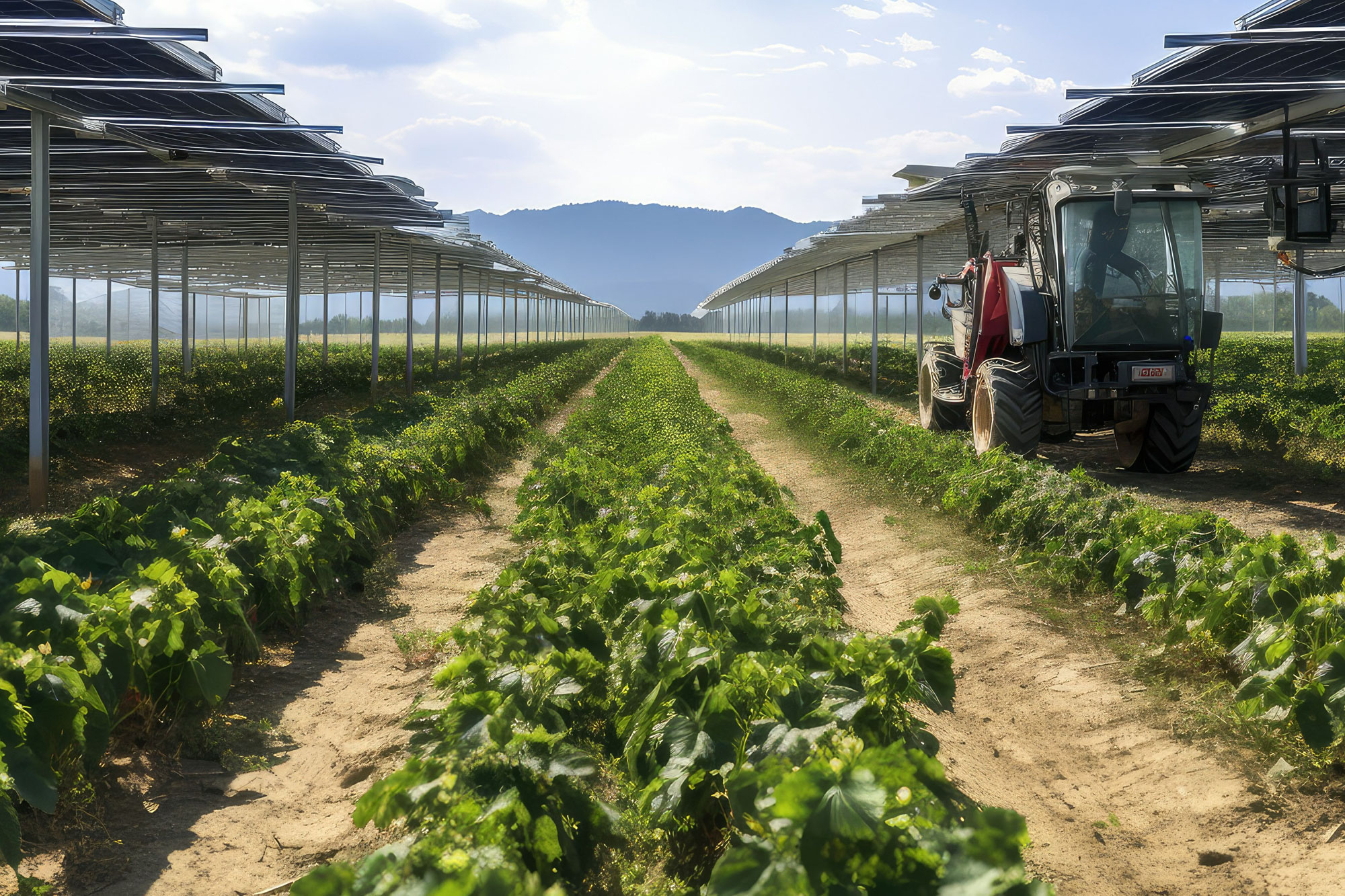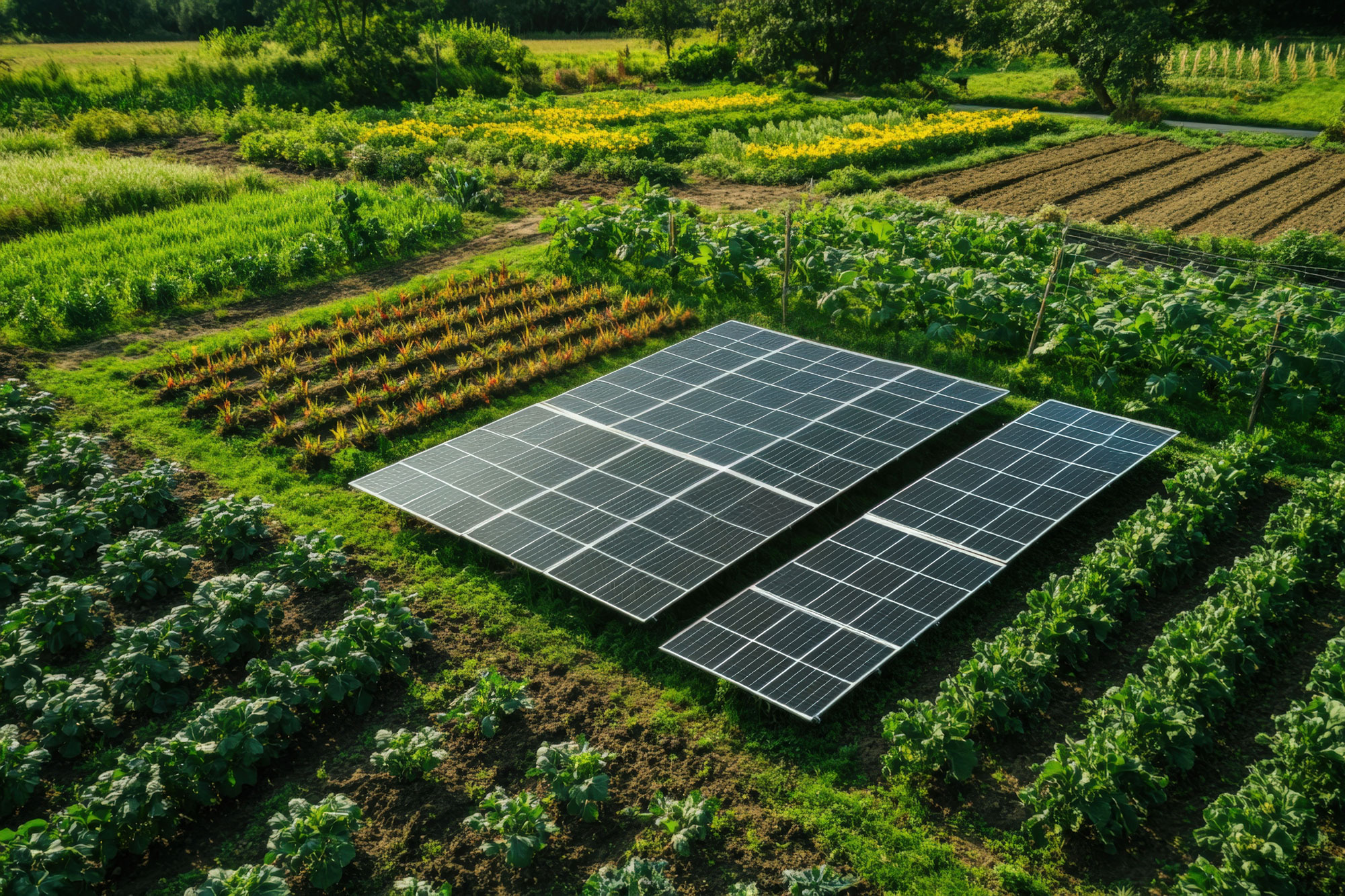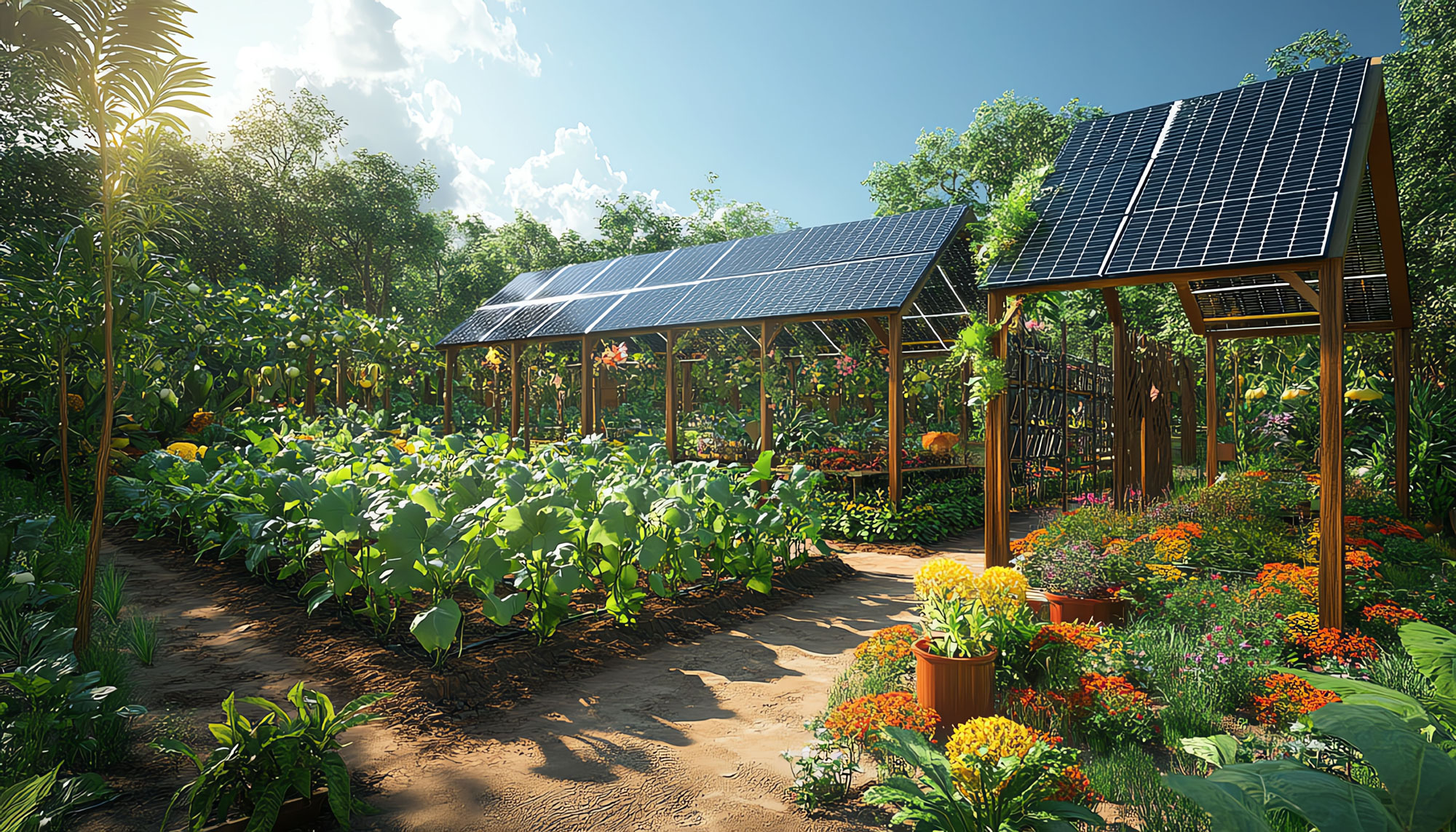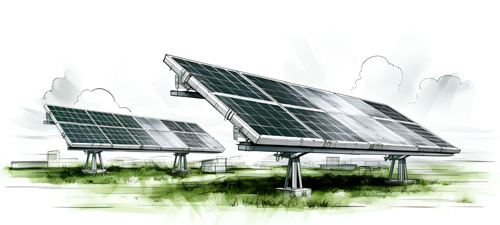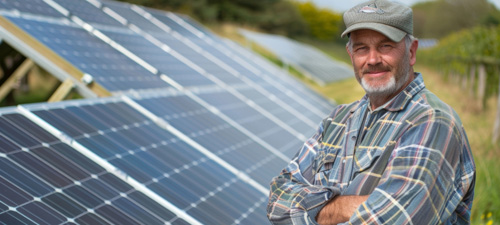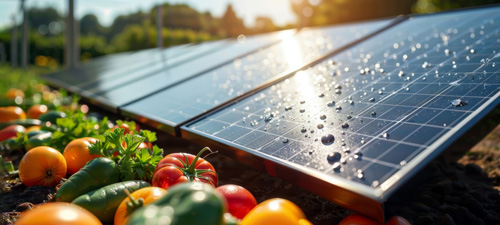TODAY’S BELIEFS ARE TOMORROW’S SOLUTIONS
Build
We employ national and local professionals to oversee every aspect of the farm transformation.Harvest
Increased revenues of up to 40% can be realized with minimum investment and cash outlay.AGRIVOLTAICS
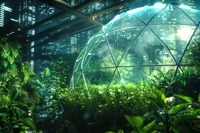
Agrivoltaics pairs solar with agriculture, creating energy and providing space for crops, grazing, and native habitats under and between panels. NREL studies economic and ecological tradeoffs of agrivoltaic systems.
To meet renewable energy goals by installing large-scale solar operations, agricultural land may be taken out of food production, but agrivoltaics offers the potential to balance food production and renewable energy goals. Under the right conditions, both crops and solar production can do better when paired together, and solar installations can provide surprising economic and ecological benefits.
Agrivoltaics is not always more expensive than traditional solar development, but certain configurations can be more complex for planning and permitting. A successful agrivoltaics project requires two or more groups who often have very different priorities—the farmer or land manager and the solar developer—to find a solution that works for both. NREL provides research and analytical support to document the benefits and costs of agrivoltaics and works to bring local community stakeholders and solar developers together to find innovative solutions that can be shared and put into practice at scale.
Different crops can thrive under the partial shade of solar installations; crops that are successfully grown in the open air in a particular region have been shown to be compatible with agrivoltaic configurations between, under, or on the perimeter surrounding solar panels.
The partial shade of solar panels reduces the amount of direct sunlight reaching crops, changing the microclimate (cooler in the day, warmer at night) and increasing soil moisture levels. There are both benefits and tradeoffs of co-locating agricultural crops with solar installations. In arid climates, for example, there might be higher yields with lower watering requirements; in extremely wet environments, panel spacing and other factors play an important role in managing on-site water distribution and eventual yields.
Foraging livestock can manage vegetation under solar arrays, which can be considered at the early phases of solar planning and installation by seeding appropriately and raising modules, wires, and electrical boxes. Livestock can reduce the maintenance costs of trimming beneath panels and reduce the need to use herbicide. Animals also benefit from the shade provided by solar panels.
https://www.nrel.gov/solar/market-research-analysis/agrivoltaics
